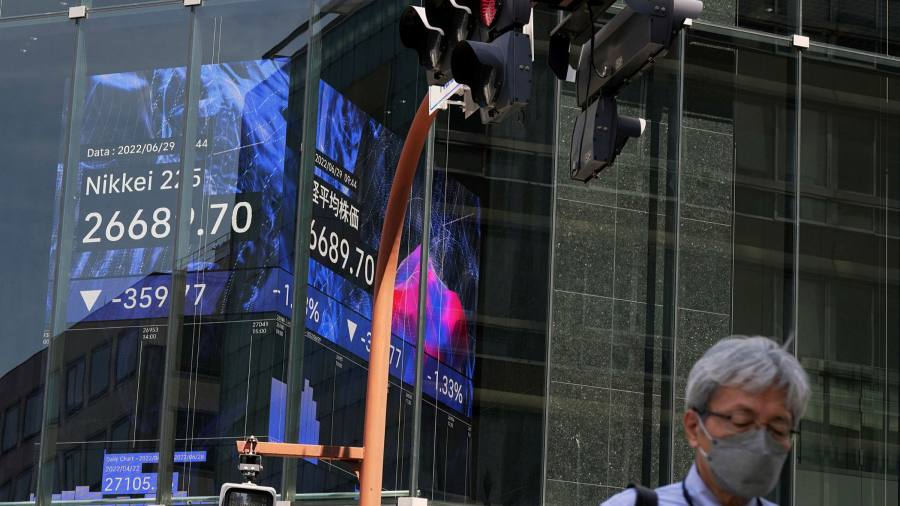Wall Street stocks traded choppily on Wednesday, after heavy falls in the previous session, as traders weighed up fresh signs of a looming economic slowdown.
The blue-chip S&P 500 share index, which dropped 2 per cent on Tuesday and is now almost a fifth lower for the year, switched between small gains and losses in early New York dealings. The technology-focused Nasdaq Composite fell 0.7 per cent, before trimming its declines to trade down 0.3 per cent.
Those moves followed steep losses overnight for the two share indices, after a lacklustre US consumer confidence report fuelled concerns about a downturn. Investors are now balancing fears of recession with prospects that major central banks, which are raising interest rates to tackle inflation, will be forced to change course to counter a downturn.
“We’ve already had a lot of weak data from the US housing market, we’ve got weak consumer confidence data from around the world because of rising prices, and business investment tends to react to the consumer,” said Trevor Greetham, head of multi-asset at Royal London Asset Management.
“Now, everyone is second-guessing the central banks.”
In government bond markets, the yield on the 10-year US Treasury note fell 0.08 percentage points to 3.12 per cent as the price of the benchmark debt security rose. Germany’s 10-year Bund yield slid 0.1 percentage points to 1.54 per cent.
Bond yields, which move inversely to their prices, tend to rise in tandem with forecasts for interest rates and inflation. But market expectations of a possible recession have prompted a repricing in recent weeks.
After the Federal Reserve raised its main funds rate by an extra large 0.75 percentage points this month, several of its policymakers argued for a similar-sized increase in July. The European Central Bank, which has experimented with negative interest rates to boost economic activity since 2014, is widely expected to lift its main deposit rate above zero by September.
Futures markets now tip the Fed’s benchmark interest rate to climb to 3.5 per cent by early 2023, down from estimates roughly two weeks ago of 3.9 per cent — signalling scaled-back expectations of the extent to which central bankers will lift borrowing costs.
The Fed’s current benchmark target range sits at 1.50-1.75 per cent.
“People fear how much demand could fall in this period where central banks are raising rates quite aggressively,” said Nitesh Shah, head of commodities and macroeconomic research for Europe at exchange traded fund provider WisdomTree.
“With higher recession risk, bonds can help your portfolio because you can price some rate cuts in coming years” added Guilhem Savry, head of macro and dynamic allocation at Unigestion.
In Europe, the Stoxx 600 share index fell 0.9 per cent, following mixed eurozone inflation data.
The annual rate of consumer price inflation in Germany declined to 8.2 per cent this month from 8.7 per cent in May, data on Wednesday showed. But consumer prices in Spain rose at their fastest rate for 37 years in June, adding 10 per cent.
Elsewhere, Brent crude oil rose 1.8 per cent to $120.05 a barrel as worries about falling global demand were overshadowed by forecasts of a supply deficit as western nations ratchet up restrictions on Russia.
In Asia, Hong Kong’s Hang Seng share index fell 1.9 per cent while its sub-index of technology shares lost 3.3 per cent.


